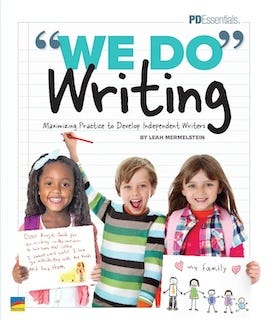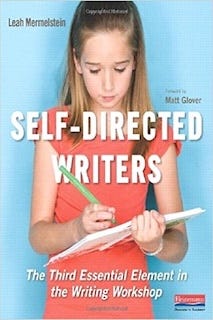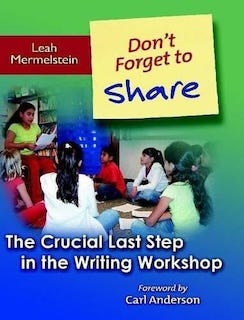This post is free to read, so please ‘like’ it via the heart below and share it widely. The best way to support my work is with a paid subscription.
We’ve all been there: You review your end-of-year data. You reflect thoughtfully. You have meaningful conversations. You jot goals in your planning notebook.
But then… nothing shifts.
Why?
Because insight alone doesn’t move the needle.
Change happens when reflection meets planned, purposeful, replicable action.
In this post, I’m pulling back the curtain on the 4-step process I use with schools and districts to turn data into real, visible literacy growth. This isn’t about buying a new program.
It’s about using what you already have—with sharper focus and clearer goals.
If you want the full breakdown of this approach, you’re in the right place.
If you're looking for full-length examples and an editable template that bring this process to life, my next subscriber only post shares just that.
What the Data Showed — But Didn’t Solve
In one district, the data revealed that students were writing often, but their sentences lacked complexity.
As we dug deeper into the data we discovered it wasn’t just a writing issue—it was affecting their reading as well
Just as students couldn’t write complex sentences, teachers discovered through both formal and informal assessments that they also struggled to comprehend more complex sentence structures.
The data showed us what needed to be improved (sentence complexity in both reading and writing).
But it was this 4-step process that turned this insight into daily, trackable literacy improvement.
Step 1: Clarify the Purpose and Frame An Inquiry Question
Start by asking: What exactly do we want students to get better at?
In this case, the goal was for students to:
Write more complex, well-structured sentences
Understand how sentences connect to build meaning when reading
Together, we crafted a guiding inquiry question based upon these goals:
“How can we help students compose and comprehend more complex, connected sentences in both reading and writing?”
This question became our north star—one that aligned planning, instruction, and professional learning.
Step 2: Define What Success Looks Like
Reflection is powerful. But clarity is essential.
We asked: If our instruction works, what will we see, hear, and read from students?
Here’s what success looked like:
Students writing longer, more precise sentences in daily tasks
Students articulating sentence structure and flow during reading
Students using academic language to explain how ideas build across sentences
With this vision in mind, it became easier to align instruction, coaching, and student goals.
Step 3: Take Targeted Action
This is where planning turns into impact.
We didn’t scrap the curriculum. We sharpened it. We added clarity, repetition, and intention.
Quick examples:
Added sentence-level warm-ups to writing and content area lessons
Revised mini-lessons to include strategies for unpacking complex sentences in reading
Wrote clear, student-friendly learning targets tied to sentence construction and sentence comprehension'
Literacy coaches curated resources (articles and webinars) on sentence level reading and writing as well as conducted workshops and in-classroom demonstrations/coaching sessions.
We moved from talking about literacy improvement to creating systems for daily practice.
Step 4: Measure Progress
Too often, data comes at the end—when it’s too late to pivot.
Instead, we:
Collected student writing samples every few weeks
Used simple rubrics to track sentence complexity and cohesion
Adjusted instruction based on real-time observations and formative notes
This wasn’t about over-assessing. It was about teaching responsively and making impact visible—early and often.
Why This Process Works
This isn’t a one-time fix. It’s a repeatable structure that adapts to many goals and contexts:
✅ Rural and urban schools
✅ Elementary and middle grades
✅ Vocabulary, phonics, grammar, comprehension—you name it
Why?
Because it doesn’t start with a packaged solution.
It starts with a thoughtful question—and ends with student work that shows growth.
Want to See This in Action?
This post gives you the framework—the “what” and “why.”
If you’re ready to go deeper, my next subscriber-only post shares:
Three fully detailed examples across vocabulary, phonics transfer, and grammar
Specific look-fors, instructional moves, and progress tools
A downloadable, editable 4-step planning template
If you’re serious about turning reflection into real, lasting literacy gains—this next step is for you.
[🔒 Click here to unlock full examples and tools.]
Let’s keep the conversation going. And let’s keep making impact visible—together.
Let’s Keep Going
📌 Want help making your own 4-step plan?
Book a coaching call—I’ll help you move from insight to impact.
📌 Need more tools?
My Literacy Toolkit includes unit templates, center ideas, and examples for building meaningful student practice across the pillars of literacy.
You’ve got the insight. Now let’s make sure you see the impact.
If my thinking resonates with you, I’d love to help you customize it for your school or district.
📌 Need tools for ELA instruction? My Literacy Toolkit has templates and planning guides and curated videos designed for coaches and teachers.
📌 Want direct support? I offer coaching sessions to help teams develop strong, sustainable coaching models.
📌 Want to learn with me over the summer? Sign up for LMC’s Summer Literacy Series If you sign up for all five sessions, you get a 10% discount. If you are a paid subscriber to my Substack you get an additional 10% off.
📌Want me to work directly with your school or district? Sign up for a discovery call.
📌Make sure to visit my website.
📌Check out my most recent book, "We-Do" Writing for a research aligned framework for how to support writing instruction and curriculum.
📌My book Self-Directed Writers will ensure that all of your students are engaged, self-directed and motivated writers.
📌My book Don't Forget to Share shows you how to leverage conversation to improve writing.
📌Want to learn more about student engagement? My two favorite books are Free to Learn and Engaging Children.
(This post may contain affiliate links.)






